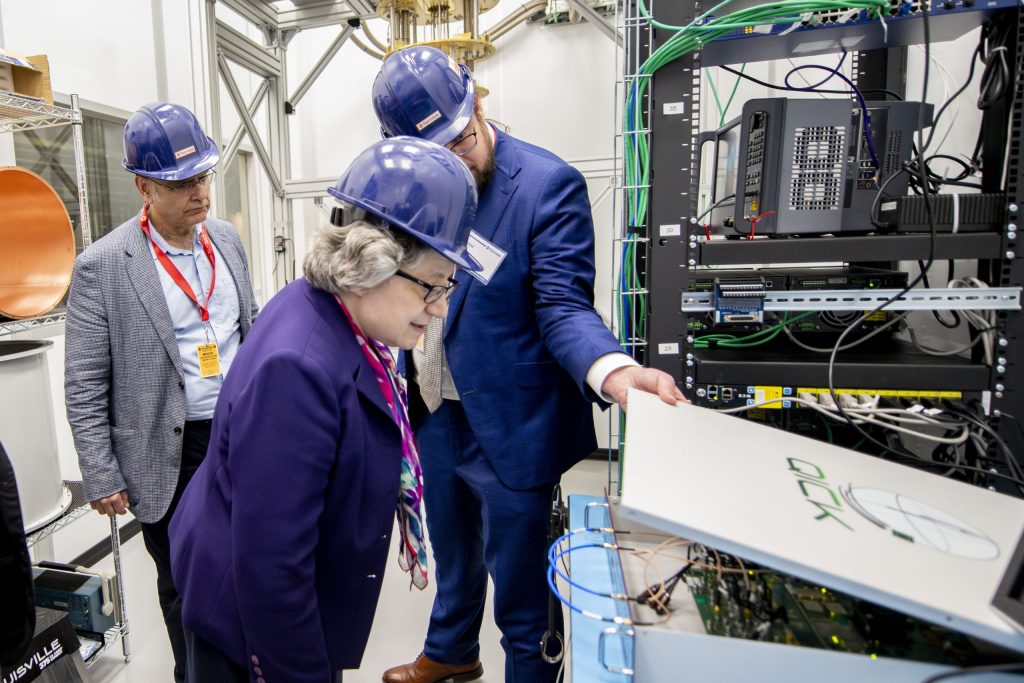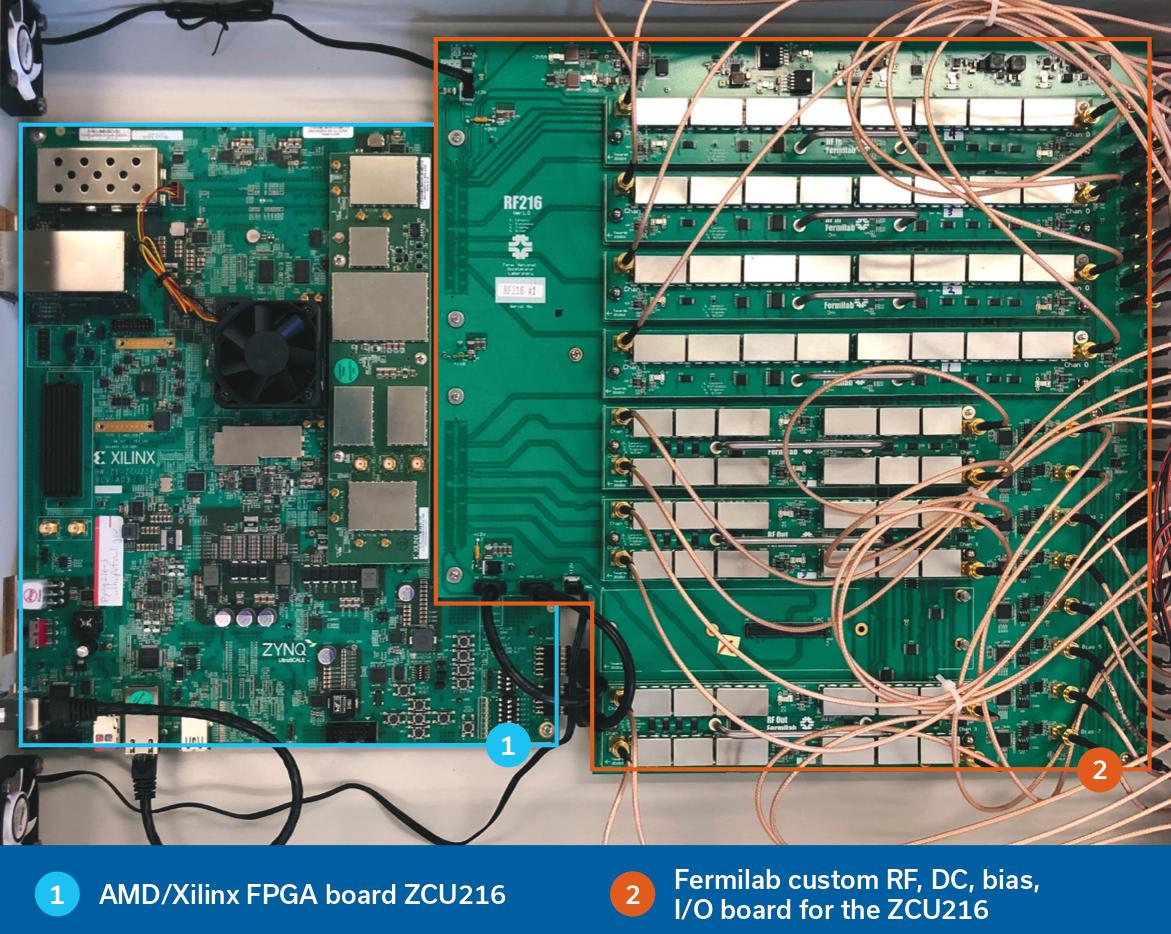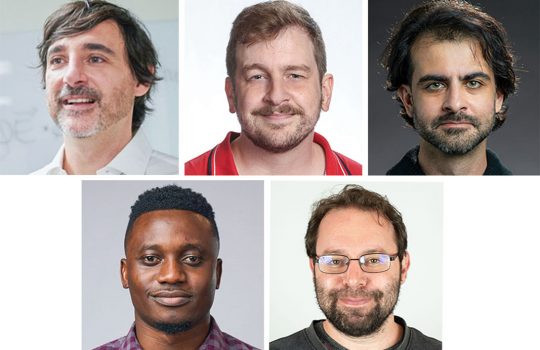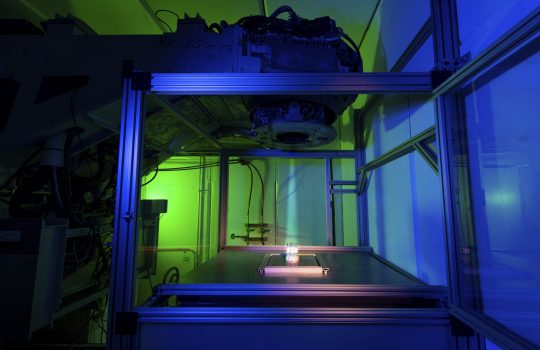The ability of quantum computers to solve some of the world’s most complex problems is an exciting prospect. It’s no wonder that research and development to harness it is underway in all sectors. Quantum computers need specialized control and readout electronics to translate back and forth between the classical and quantum computing worlds. Optimizing these are key to advancing quantum information science, or QIS, technology.
Engineers at U.S. Department of Energy’s Fermi National Accelerator Laboratory developed the Quantum Instrumentation Control Kit, or QICK, a product that combines a radio frequency board with control and readout hardware and open source software to control it. QICK is being used increasingly in the scientific community, with over 300 users worldwide. Now, a multidisciplinary team at Fermilab, including engineers and business and technology transfer experts, wants to market a new product, a companion board called the “QICK box.”
“As with Raspberry Pi, an open-source product that has accessories one can purchase at commercial outlets, the QICK box can be thought of as accessory to QICK,” said Fermilab Lederman Fellow Sara Sussman, who is part of the QICK development team.

Fermilab participants in Energy I-CORPS receive certificates of completion for their project promoting the commercialization of the Fermilab-developed Quantum Instrumentation Control Kit, also known as QICK. Pictured, left to right, are Carolina Villacis, commercialization program manager for the U.S. DOE Office of Technology Transitions; Daiane Possebon Colombo, project entrepreneurial lead; Sara Sussman, project principal investigator; and Vanessa Chan, chief commercialization officer for the U.S. DOE and director of the OTT. Photo: Energy I-Corps
The accessory is a custom radio frequency board that improves signal-to-noise ratio and qubit control by optimizing amplification and filtering for the incoming and outgoing signals, which is, as Sussman explains, what everybody in QIS is trying to do.
Scientists must filter and amplify each signal in just the right way to minimize noise as the signal travels to a qubit housed inside an extremely cold dilution refrigerator. Because the signal loses strength along the way, scientists must re-amplify it. And they must do this with as little noise as possible so they can see the information contained in the qubit measurement.
The QICK box removes a lot of complexity for its users. Its hardware components come already optimized for signal-to-noise, so users do not need to become experts in doing so. In addition, the QICK box replaces all the space-consuming wiring, amplification and filtering components that would otherwise be required in a box the size of a small suitcase. This, along with its open-source field-programmable gate array firmware and software, makes QICK quite inexpensive.

Fermilab Director Lia Merminga views a QICK box in the QUIET underground laboratory at Fermilab. Photo: Dan Svoboda, Fermilab
The QICK developers have gathered feedback from established and potential users, most from the scientific community, since the open-source product became available. They believe the QICK box will benefit the broader quantum community. But first, they need to get it into that community’s hands.
For this goal, and with funding provided by the DOE Office of Science Advanced Scientific Computing Research program, Sara Sussman and Daiane Possebon Colombo, also from Fermilab, participated in Energy I-Corps. This intensive two-month program from DOE’s Office of Technology Transfer is designed to help labs bring technology that they’ve developed to the market. Sussman was the project’s principal investigator and Colombo was the entrepreneurial lead.
The duo paired with industry mentor Conner Prochaska of Bohr Quantum Technology, who reviewed their progress and provided valuable feedback.
The primary purpose of the program, according to Colombo, was to analyze the market and see whether there was a market for the QICK box. To this end, they interviewed 76 members of the international quantum community, including those from Google, Amazon Web Services and Rigetti Computing, the Unitary Fund and several universities.
These interviews not only established that there is a market for the QICK box but also offered other insights. For instance, the team determined that today’s quantum industry values open-source hardware.
“Being open source is important to the quantum market,” said Colombo, adding that several interviewees mentioned the room to grow, since QIS is still a new, research-based field.

Components of the QICK box, including the QICK open-source software and hardware components on an off-the-shelf radio frequency system-on-chip board (1) and the new customizable companion board (2). Photo: Sara Sussman
Using information they gathered, the pair developed a value proposition statement and a marketing proposal along with key interview takeaways that led to the proposal.
Based on their market research, the pair presented their proposal in Washington, D.C., to DOE program managers and leaders from the Office of Technology Transfer, ASCR and the QIS community.
Back at Fermilab, the team is on to the next step — working with Fermilab’s Office of Partnerships and Technology Transfer to work with industrial partners to manufacture the QICK box on a larger scale.
Throughout the program, the full QICK team, including principal engineer Gustavo Cancelo and software lead Sho Uemura, along with Sussman and Colombo, were meeting to discuss what was learned and to collect input on program exercises. The team is already incorporating some of what was learned into QICK and its companion board.
“Energy I-Corps has helped QICK advance several steps toward industrialization,” said Cancelo. In particular, it has shown a clear path forward to increase QICK use in the quantum community.”
The team is continuing to focus on providing researchers and scientists with the tools they need to build their experimental capabilities without spending a lot of money.
The development of QICK was supported by QuantISED, the Quantum Science Center (QSC) and later by the Fermilab-hosted Superconducting Quantum Materials and Systems Center (SQMS). The QICK electronics is important for research at the SQMS, where scientists are developing superconducting qubits with long lifetimes. It is also of interest to a second national quantum center where Fermilab plays a key role, the QSC hosted by Oak Ridge National Laboratory.
Fermi National Accelerator Laboratory is supported by the Office of Science of the U.S. Department of Energy. The Office of Science is the single largest supporter of basic research in the physical sciences in the United States and is working to address some of the most pressing challenges of our time. For more information, please visit science.energy.gov.



